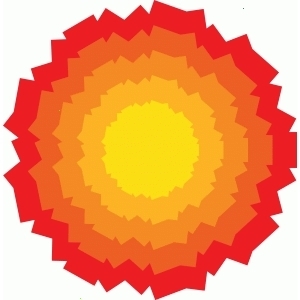No, this isn’t a cast iron thing. Using stainless pans, you can get nonstick effects that, in my experience, far outperform Teflon anyway. The process is called “spot seasoning.” I have cooked crispy, cheesy rice noodles with eggs with zero sticking.
I love my cast iron pans, but stainless is my daily go-to. Added bonus: use 100% copper wool to clean your stainless pan. The copper-coated wool at most grocery stores is problematic; you might get a few uses out of the coated garbage and then it starts shedding metal bits.
I think it’s a bit disingenuous to say that any other cookware material outperforms Teflon nonstick, and actually harms the conversation when trying to convince people to switch to an alternative. Nothing is going to beat the nonstick performance a fresh nonstick pan, and that’s perfectly fine. I don’t need a pan so nonstick that I could start an egg in a cold pan with no oil. Well-meaning people run the risk of frustrating less experienced cooks when they assert that they’ll get the exact same or better results from a stainless steel pan, which just isn’t true, especially right from the start. Stainless has plenty of other benefits that make it more than worth the learning curve to use. Sometimes you want some stick, to build fond for a pan sauce. Or you need a pan that can go from stovetop to oven to finish cooking.
This post wasn’t aimed at you specifically, I just wanted to vent at what I feel like has been an uptick in cookware bros flexing their ability to reduce sticking on stainless steel (“I’m so smart I name dropped this little-known thing called the Leidenfrost effect”). I quite like your video and post because they show an alternative way to reduce sticking on stainless that is definitely more forgiving for a beginner than trying to hit a specific temperature range.
As a wonderful cook, I resent just about every piece of cooking advice. They’re just oft-repeated, poorly-understood concepts.
For example, I love cast iron. It’s my go-to for nearly all my cooking. I cannot stand cast iron people. They think their lump of iron is a baby that needs to be spit polished and pampered like a Fabergé egg. No, you beat the ever-loving hell out of it, abuse it, soak it in water, leave it to rust, abuse it with scouring pads… then you rub a 1/16th tsp of oil on it and get on with life/cooking.
Edit: Same thing with knives. Before you give me a huge sermon about how to sharpen and care for knives, why don’t you understand that you can use a $5 German steel chef knife, a Rada quick sharp and a hone. For the amount most people cook and prep, that’s going to last 30 years. I cook every single meal from scratch, there’s 20,000 cutting board Kms on my $5 knife. Yet if the subject comes up, people are linking $300 knife reviews… Proof they want to have a knife, not use a knife.
There’s a joy with high crafted tools that you can’t really get with an average equivalent. It usually comes down to comfort and looks. Is it worth it? Depends, I suppose.
I’ve cooked every meal from scratch for 5 years
There’s one tool that was worth the $50 and that was a garlic press, the rest was money wasted
It’s much better to understand your tools and buy appropriately, instead of just assuming that lots of money is the answer
That’s my opinion and experience
I agree with both your original comment and the edit, but especially the bit about cast iron. Neglecting mine for an extended period led to uneven patches of seasoning, but when I got round to giving it a proper scrub, it was like hitting a reset button. I’m going to try to be better at basic seasoning/maintenance this time, but the joy of cast iron is knowing that it’s super forgiving if you do mess it up.
Tangential to your edit: I enjoy being able to sharpen knives, but that’s mostly because I’m a nerd who has other tools I need to sharpen anyway, so I already have the stones. Something that I found striking though is that when I was learning how to sharpen knives, I asked if I could practice on various friends’ kitchen knives. Most of them were poor students, so I sharpened many cheap knives, and I was impressed by how well some of the cheaper ones performed compared once they were sharp. They held their edge for surprisingly long too.
I’m quite fond of my Wusthof chef’s knife, which was a bit of an indulgent treat for myself, but I am utterly baffled by the gear acquisition syndrome that so many seem to fall into. It’s not just that prospect of someone who barely cooks buying a $300 knife that perplexes me, but that so many of these people keep acquiring more knives. If they said that collecting knives was just their hobby, and that they were never intending to actually use them, then I’d shrug and say fair enough. That’s pretty rare though — the underlying implication that these people seem to operate under is that the fancy knives make you a better cook (and that the perfect knife will make good cooking into an effortless, joyful endeavour). It’s an odd culture that’s developed.
You’re making some great points
I like that you like sharpening, my grandfather taught me how as well and it’s a pleasure to know how. I have also been surprised how some “bargain basement” cheap ones are higher quality steel than the expensive Henkels, just as one random example
Maybe it’s my fault, but I don’t think so, I think it just revealed a deeper truth to me…
I was given professional chef knives by someone who dropped out of cooking school. I mean, you could just hold the chef knife in your hand for a second and tell you are dealing with a completely “next level” tool
I think I had that knife for all of 5 days before something took a massive chip out of the edge. I suppose a person could argue it was my fault. I really don’t think it was, I think it was just a freak incident. But the timing of it revealed to me that I’m just going to stick with my cheapos. There is too much going on with cooking to have to stress about if my little delicate knife can handle a tap against a pan edge
That chipping incident disabused me of many false notions. I can absolutely acknowledge it made prep quicker, but I did the mental math and realized I’m not going to pamper and baby knives my whole life. I need to be able to have tools that if they break, they go straight in the trash and I just get another one. In the forensic analysis, it’s much cheaper and easier to go that way.
This is for me as a home cook - I can acknowledge if I worked in a professional environment I would need pro tools that I would baby and pamper, but my home kitchen is not the place
I went for a cheapish knife, like £20 or so each for a few knives. My thinking was I don’t want the 20 knives in a set for £19.99 that are probably made of stamped aluminium and hollow plastic handles, but by £20 you are getting something good without spending a silly amount of money.
As for the cast iron I won’t deliberately leave mine to rust, but happily use it over a fire and then just wipe off the worst of the soot/ash. But it’s black anyway so no one is going to notice spot buildup. Just remove anything that would easily brush off on other things.
I agree with your approach
I think knife sets are a bit of a con job because a good cook really just uses one or two. I’m looking at my knife block and I’m seeing 9 different knives in there, two of them get used. Two… The $5 el-cheapo chef knife and a $1 paring knife. I haven’t used the serrated bread knife in 10 years, because my chef knife is sharp enough to shave my beard
I’m also kind of exaggerating a bit on my prices. Yes I’ve paid $5 or 6 but I time the purchases to be right after Christmas when they’re on clearance. I’d say in “real money” and with recent inflation I’m using about a $35 CAD knife
I also find the pricing of them to be completely arbitrary. I have been gifted knives that should be extraordinarily high quality based on retail price… And found the handles/plugs were falling off, or they were degrading within weeks!
I don’t understand why we live in a world where someone can sell a $500 knife that in terms of manufacture and material cost, is almost indistinguishable from a no-frills budget one. And in many cases, conspicuously worse in every measurement!
Been looking at sharpening stones a bit today, genuinely wonder if I could instead get 2 slate roof tiles and grind them against each other until the surface is flat enough to use to sharpen a knife. Would cost almost nothing.
Or bits of slate for making walls, would have more thickness to it but otherwise more irregular sizing. Could chip it to the right kind of size first and then grind the stones smooth though.
I love the wild, devil may care, DIY approach!
It’s the type of lunacy that I would try just to see how it works hahahah
I’ve said in many other threads in regards to cooking, and my knives, that I admit and confess, in full, that I am a complete rebel and sinner
I use a dual wheel Rada quick sharp to blast the correctly angled edge, knowing full-well that it shears off material, and then I quickly use my 14-in hone. I am completely aware that I am gradually eroding my knife, but I don’t care, it’s sharp enough to shave a buffalo and it takes me 8 seconds
I know by official standards and reckoning… I am abusing my knives and doing it “wrong”
But I cook every day, and it takes me 5 years to go through a knife. I completely gave up on sharpening with a stone a decade ago. My attitude is “fuck it, I’ll just get another knife in 5 years, this is a primary tool for me and I’m not going to baby them”
I would love to know how this works out for you though!!! I can absolutely envision a scenario where you angle these pieces of slate and you make yourself your own version of a quick sharp!! This is madness though, which is why I love it LOL
Knife hipsters: You must spend £200 on these whetstones!
Me: Haha, £1.50 roof tile.
Shame I don’t live near anywhere to get slate or another suitable rock type, would be a few hundred miles away. The rock here is rather crumbly sedimentary rock from what I have seen. Slate coasters could be dual purpose.
Now you’ve got me wondering what kind of materials are cheap as hell, come flat out of the production line, and are still more durable than the steel you’re sharpening.
This whole convo has got me thinking!
deleted by creator
You won’t find any disagreement from me there. I just think that when you set the expectation too high (stainless steel can actually be more nonstick than Teflon), people will give up and just go back to nonstick pans when they can’t achieve those results.
Regarding dishes that are solely the domain of Teflon, I think it definitely has a place for dishes that already have a high bar for execution. A perfect French omelette is hard enough on a nonstick that adding another layer of heat management puts it out of reach for most people. But like you said, there’s not much that I’d use Teflon for, so I just don’t have one after switching to induction.
I’m glad I am reading your comments. I am that kitchen novice. And so is my husband. We’ve been trying to move away from Teflon since we had a baby, and are struggling to make stainless steel worth the extra time it takes to clean. I’ve been feeling very frustrated that despite trying to do the heat it up and use oil thing, it’s still awful, and I figured either we’re dumb and bad or everyone online is just lying. We just went back to Teflon, because people online say it should be perfectly non stick and then also that you can only clean the stainless steel with a soft cloth. It’s hell.
First of all, congratulations on the baby! :) If you don’t mind me asking, what sorts of dishes are you struggling to make on stainless steel?
I’m going to be presumptuous here and make a few suggestions, so feel free to push back if you’ve tried some of these things and they haven’t worked or aren’t as easy as I’m presenting. If you do still want to transition to stainless, it’ll be easiest to start by only doing it bit by bit, rather than all at once. Dishes that naturally contain some acidic element (like tomatoes, citrus juice, vinegars, or wine) will be easiest to cook without a bunch of sticking. I’d recommend starting with a tomato-based pasta sauce. If, as it reduces, you notice bits sticking to the sides, it’s easy enough to loosen up just by stirring a bit of the sauce onto it. Once you’re more comfortable with this, you can try sauteing vegetables in the pan. Even with preheating, it’ll might result in some stuck on bits, but adding a splash of lemon juice or champagne vinegar at the very end and agitating all of the ingredients should both brighten up the overall dish a bit as well as lift most (if not all) of those browned spots you saw. When it comes to searing meats, you might also have to adjust how often you’re flipping. If it feels stuck when trying to flip it for the first and second time, waiting a bit longer will eventually lead to the meat releasing from the pan. After the initial release on both sides, it won’t be anywhere near as sticky and you can flip as often as you’re used to. I wouldn’t worry about any browned spots either. While resting the meat, you can toss a bit of wine along with some stock in, turn up the heat, and stir continuously to loosen those bits up as well as flavor your pan sauce. Once it’s reduced to about your desired consistency, you can throw a slice or two of cold butter in and stir for a relatively low effort but still tasty pan sauce. Plus, you make washing the pan much easier. I think this tends to be easier than trying to achieve a nonstick effect with stainless, and sort of demonstrates that there’s ways to work around the issues some people have that aren’t strictly heat management.
My cat really wanted to press the submit button halfway through and force me to edit it to complete the thought as quickly as possible. Sorry if it isn’t quite helpful, and I’d be happy to follow up on any of it.
That’s all wonderful advice. I’m trying to make scrambled eggs. It’s one of the baby’s favorite foods. Any advice there?
Unfortunately, scrambled eggs are one of those things that are a bit harder to cook in stainless. If you’ve been using oil, switching to butter can help with some of the sticking, but you might end up using more butter than you’d like and some heat management is still necessary. Honestly, a lot of people keep a single nonstick frying pan just for things like eggs, seared fish, or sauteed tofu, so don’t feel pressured to make it work on stainless.
If you really feel compelled to move off Teflon completely, a carbon steel or cast iron pan will be much better suited to replacing nonstick for the instances where you’re getting excessive sticking, at the cost of needing to avoid acids in the pan. But if I were you, I’d just keep using my Teflon pans until there’s any flaking or chipping before making up my mind.
Thank you for the response
Got 2 cast iron pans, one probably needs a good reseasoning sometime but the other is really good right now. Possibly not as good as brand new Teflon, but how long does Teflon remain good as new? Mine has long passed the age at which Teflon should be disposed of too, so how much less pan waste am I making by using cast iron?
I can also use it over a firepit, just brush the ash off the base when I bring it back in.
I’d posit that your well-loved cast iron looks even better than new. For me, moving off nonstick pans was about sustainability (and money waste, who wants to buy a 2 year subscription to cooking?), but I can’t get over how beautiful some cookware gets just from being used. The patinas on cast iron/carbon steel pans reflect the dedication of their owners to a craft, which I’ll take any day over a colorful pan whose surface flakes just from looking at it.
Pointing out inaccuracies and giving countrary opinions are fine, but calling OP disingenuous is calling them dishonest - and I don’t think you’re even using it correctly - the term usually implies that they’re playing dumb or innocent.
And this comment genuinely isn’t aimed at you, I’m just venting about people presuming to magically know somebody’s state of mind.
It seems like you’re making the assumption that in saying it’s disingenuous to make the claim, I’m casting some final moral judgment about the OP or their overall trustworthiness. Correct me if I’m wrong about that, you just seem to have taken issue with me potentially accidentally having called OP dishonest. To be clear, I was calling them dishonest (with regards to only the claim they made about their stainless steel pan being more nonstick than a nonstick pan, at least for the scope of my comment). It’s just patently untrue that a stainless steel pan is more nonstick than a Teflon nonstick pan, no matter what you do to the stainless steel pan (except applying a nonstick coating). I don’t have to make any unfounded assumptions about any mental state here. To make the claim requires that you are either innocently misinformed/uninformed or purposely making a misrepresentation about this particular issue.
And, for the record, I’m not assuming that the OP is malicious or intentionally set out to mislead people. It’s exciting to achieve little to no sticking in a stainless steel pan and you want to share that achievement with others, hopefully to encourage them to achieve the same thing. All I did was correct some innocent exaggeration. And if it was malicious, well, at least I still used disingenuous correctly.
It’s the simplest thing in the world with a stainless pan. Bring up the heat, add in some oil, wait for it to smoke, wipe it out with a cloth, in with cold oil, add in your food. It won’t stick.
Thanks for this but I will stay say teflon is simpler (not better!)
The most annoying thing for me with Teflon was that in two years or so it is no longer nonstick, so your pans have essentially an expiration date.
Not to mention that it will be scratched and danger to you and all around you long before that.
I preach the gospel of our lord and savior stainless steel pans!
A soft (e.g. silicone) spatula is all you really need to avoid damaging a non-stick pan. And they are incredibly useful for other uses (a rubber flipper is awesome if you are perpetually impatient when it comes to flipping meat and don’t want to damage the skin).
But yeah. They are inherently a consumable which is why nobody should ever spend more than 20-ish (pre-trump) USD on one. It is up to an individual to decide if they would use it enough to justify that.
Id recommend going for carbon steel instead of teflon if all clad or stainless steel is too much work.
For like $40-100, they heat up insanely well, are very light and will last your lifetime. They form an excellent non stick coating after several uses just like cast iron.
+1 on the carbon steel pan. Eggs slide right off mine.
I bought two a couple of months ago and I am never going back to anything else.
If you have a strong burner, the recommended carbon steel wok works great too, even on my electric stove. Im stunned at how fast it heats up and what a good job it does even in my inexperienced hands.
Kenji, a serious eats alumni, has an award winning wok book I picked up at the same time. It’s a beast, covering tons of different cuisine and methods. Really great combo.
Sometimes the food can do it too – I scratched my last nonstick pan with a silicone spatula because I ground black pepper on my eggs and caught a craggy piece just right while flipping. After being super careful for months! So irritated.
deleted by creator
I like the heat retention of a good heavy and smooth cast iron best, and you don’t have to season it very often at all. I pre heat it, add a little butter or oil, and do my cooking. Only way to go if you aren’t cooking a steak or burgers outside. Eggs slide like new Teflon.
right? six steps and having to deal with hot oil every time or use teflon and have a slightly higher risk of cancer and zero extra steps to cooking. I’ll stick with teflon and hope for a global war to wipe us all out before I have to worry about cancer.
I want to shun you but it seems like you’re struggling enough 😑
I have so many uses for this sentence in my life.
If you’re lazy just say that
i am lazy but i’m not even saying doing less steps is worth the cancer it gets you. I’m just pointing out that simplicity isn’t really a strong side of stainless steel when comparing it to teflon since simplicity is basically the only thing teflon has going for it.
Afaik Teflon isn’t carcinogenic. Veritasium recently made a video about teflon and more importantly PFOA used to produce teflon.
Here if interested https://youtu.be/SC2eSujzrUY
Extremely weird thing to be elitist and off-putting about.
I add oil, just enough to barely coat the pan, and then tap a teeny drop of tap water from my finger onto the pan. Once the drop pops (if it got touched by the oil) or simply boils away, I can start cooking.
Additionally: butter. Butter somehow doesn’t stick for whatever reason, even if the pan isn’t fully heated up yet.
Same here, but with a different order.
- Turn the heat on.
- Wait.
- Test with water. If it doesn’t sizzle, wait and test again. If it does sizzle…
- Add oil
mmmm… butter
It’s an emulsion, butter is basically cheat codes
Thanks for giving a simple summary so I didn’t have to click and watch.
Does this work with cast irons too?
Update: just made eggs sunny side up this way on my moderately unwell seasoned cast iron pan. Worked amazingly well. Who knew I was putting too much oil… I brought the temp down a little after cracking the eggs in.
Hell yeah buddy
belive it or not with enough heat you can cook eggs in a cast iron skillet without any oil ~(Some char may remain in the pan, restrictions apply. Please see your local pedantry department for all complaints about this advice.)~.
Been using the same set of pans for about 30 years. Just cold oil and a hot pan, get my food in immediately and same thing. I can slap pork chops in there no problem. I just have a feeling if I tried this instead of your method on a new pan, I’d be screwed.
I’m pretty sure the pan is just seasoned after that amount of time and they definitely get used daily, if not multiple times a day.
A stainless or carbon steel pan will take to the cold oil method first time. Cast iron will depend on the quality; some come preseasoned, but the quality of that varies a lot too.
I got my first nice CI skillet about five years ago and daily driving it. I talk a good game about steel pans but I just don’t enjoy them as much. You build their seasoning, it works perfectly once, then it’s gone. There’s no relationship, no satisfaction in getting a fried egg to slide freely about the pan.
“wipe it out with a cloth” I’m curious about the cloth you use and what you do it? Sounds really messy an oil soaked cloth… But you do say it’s the simplest thing…
Sometimes I forget others haven’t accepted tea towels into their heart. I’ve got a dozen or more cloth towels around the house for mopping up. It all comes out in the wash. Cotton ones won’t burn readily, so they’ll dry out a hot oily pan no problem.
Paper towels work fine. Just make sure they’re pure paper and not mixed with synthetics or weird scents or whatever.
Except the easiest thing in the world is just as the youtube guy said. If you use a cast iron or carbon steel, the seasoning doesnt really wash off as much, so you don’t have to re-season the thing every time you want to use it. My cast iron pans stay seasoned, even if I wash them with soap. SS doesn’t really have any benefit over carbon steel, and only a benefit over cast iron in that it’s lighter. If you want a lighter pan/wok, there’s little benefit over getting carbon steel.
deleted by creator
No oil in your batter? I wanna know more. Doesn’t that make the pancakes too chewy?
deleted by creator
I might have to try this next time. Might just stick to the King Arthur Flour ratios I like to use, but no oil. Trick is probably not to overmix.
Isn’t teflon a cancer-causing “forever chemical”?
Veritasium just released a video about teflon and it’s impacts yesterday https://youtu.be/SC2eSujzrUY tldw they say that it’s fine for non-stick pans at lower temperatures but the smoke it creates at high temperatures is where the danger is. Especially for pet birds.
Teflon itself is perfectly safe. It’s far too large for your body to absorb.
But many of the byproducts involved in the production of teflon are much less safe.
In other words, if you already own a teflon pan, you’re fine. Keep using it. But if you’re considering buying a new pan, there are good reasons to avoid teflon.
It’s also important to note that Teflon (PTFE) is used in a multitude of stuff, and there’s no easy replacement. Got a 3D printer? The tube connecting the extruder motor to the hotend is probably PTFE.
The PTFE industry isn’t going to collapse just because we all switch to different cooking pans.
Lots of food machinery is Teflon coated, for example mozzarella machines
I have heard that coats are often covered with PTFE as well, as it makes the rain roll off rather than soak in
Hey, did you hear veritasium made a video?
No I didn’t, you have a url for me? /s
Yes
Idk what else to say so here’s my favourite recipe
Ravitoto Malagasy
Ingredients:
Serves 8
1.5 kg beef
500 g pounded cassava leaves
2 large onions
6 cloves garlic
1 shallot
1 ginger
1 stock pot
salt, pepper
STEP 1
If you’re not keen on pounding the cassava leaves yourself, you can find them in Afro-Asian grocery stores. You can even find them in the frozen section under the name ‘saka saka’.
STEP 2
Cut the beef into large cubes, then sauté in oil until browned (about 10 minutes). Add a little water to cover the meat and cook for 20 minutes.
STEP 3
In a pot (such as a cast iron pot), brown the sliced shallot in a little oil, then add the garlic and ginger.
STEP 4
Add the cassava leaves, salt, and a little more water and oil. Heat over low heat for about 30 minutes. Remember to stir regularly.
STEP 5
Peel and finely crush the garlic and add it to the mixture, continuing to stir. Let it heat for a good 10 minutes.
STEP 6
Then check that the water has drained. When the juice darkens, the dish will soon be fully cooked. The cassava leaves should have turned from green to black. Now pour in the broth and stir lightly.
The ravitoto is best served with rice.
oooohhh I was just in Nosy Be, I ordered a ravitoto once, unfortunately they didn’t have the ingredients on that day. It’s still a mystery to me. Mais j’adore le nom il me fait rigoler, j’imagine un mélange de Toto et du Ravi de la crèche
ah et je vois
1 ginger
je suis plutôt châtain j’espère que ça fout pas la recette en l’air
Haha oui, en malgache ça se prononce presque comme raftoute !
Tu peux customiser la recette comme tu veux, l’important c’est le saka saka, je suis même en train de réfléchir à l’adapter en version vegan pour les gens qui ne mangent pas de viande!
Saka saka c’est le feliki ? le manioc ?
Oui c’est ça, feuilles de manioc pilées, ça se trouve sous forme de boule surgelée
Is there a particular cut of beef that’s ideal for this?
They are used to produce teflon and will be released if the coating is damaged.
Veritasium did a video on this topic a few days ago. I highly recommend it. There’s a bit of nuance here, from what I understand, regarding PTFE which is the chemical composition that Chemours markets as Teflon. The video talks about PTFE being rather inert, passing through our bodies if we ingest it. The real issue is heating the substance above 350° C (662° in freedom units).
I’m not an expert but I think it’s worth reading up on the subject. If there’s anyone else more read up on the subject please let me know if I’m wrong here.
Veritasium made an interesting video about this. The teflon on pans shouldn’t be dangerous (unless heated above 350°C), but in the process of making teflon dangerous “forever chemicals” do get released
https://lemmy.world/post/29654949
Something like that.
Veritasium just made a great video about the history of Teflon and related chemicals. I got claude to help me put here:
Teflon and PFAS Health Concerns
Teflon (polytetrafluoroethylene or PTFE) and related compounds have several health concerns:
Teflon itself
- The intact, long-chain PTFE polymer generally passes through the body without being absorbed, as you noted
- Not considered directly toxic when ingested in its stable form
Related harmful compounds
PFOA (C8) and PFOS:
- Used historically in Teflon manufacturing (not present in final product)
- Extremely persistent “forever chemicals” that bioaccumulate
- Associated with:
- Various cancers (kidney, testicular)
- Immune system impairment
- Thyroid disruption
- Reproductive issues
- Developmental problems
Shorter-chain PFAS (including C6):
- Introduced as “safer” replacements for C8 compounds
- Still very persistent in environment and bodies
- Growing evidence suggests similar health concerns to longer chains
- May be more mobile in environment
Heating concerns
Teflon breakdown:
- At normal cooking temperatures (below 500°F/260°C): minimal risk
- At high temperatures (above 500°F/260°C): Teflon begins to degrade
- At very high temperatures (above 660°F/350°C): releases toxic gases including:
- Fluorinated compounds
- Particulate matter
- Can cause “polymer fume fever” in humans (flu-like symptoms)
- Fatal to birds due to sensitive respiratory systems
Recommendations:
- Don’t preheat empty pans
- Avoid high-heat cooking with Teflon
- Replace scratched or damaged Teflon cookware
- Consider alternatives like cast iron, stainless steel, or ceramic
I have never has success with stainless steel but I will definitely try the heat/wipe/fresh technique if I get a chance.
Don’t know who needs to hear this but you don’t need to season stainless steel. You just need to pre-heat it correctly for it to gain non-stick properties.
You have to pre-heat to around 400 degrees Fahrenheit before you put anything in the pan - including oil. You know its good when you drop some water in and it immediately beads up and glides across the entire surface. If it boils and evaporates, the pan is still too cold. If it beads up and starts to glide but freaks out in a certain spot, you have a cold spot in your pan. You’re trying to achieve the leidenfrost effect
Keep in mind that in a lot of dishes you actually want some of the food to stick to the pan and become [frond].(https://www.thespruceeats.com/all-about-fond-995681) Then you deglaze it later with some kind of wine or stock.
Stainless steel is perfect for this kind of cooking. I’ve been using it exclusively for years. Its versatility and low maintenance is why all the best kitchens in the world use it.
Thanks for the tip about preheating! I bought a set of Allclad mostly so I could go from stove to oven to finish, but haven’t bothered to learn how to correctly cook eggs in them (have a carbon steel crepe pan that is the designated egg pan, highly recommend). The rest of the reason for them is that they are nigh on unfuck-up-able.
Fond. Fronds are parts of a tree.
Sis anyone else watch the video? I was waiting for his”spot seasoning method” until I saw just how much oil he used to cook and egg without sticking to his wok. Dude lost all credibility right there, and I quit watching
This is how you cook with stainless. Get a high smoke point oil, get the pan and oil plenty hot, the put the food in. It immediately sears the contact surface and this is what prevents sticking. This is also why you slowly place food in the pan (other than to avoid spatter), it gives a little extra time for this to happen. Otherwise you gotta wait for the surface to brown and hopefully unstick, which might work for things like chicken or the skin side of fish, but anything liquid like eggs or super soft like the fish meat will have a good chance of sticking.
IOW, just do what chefs usually tell you to do with stainless and get it hot with the correct oil. Best odds of not sticking. Modern non-stick pans are pretty good if you obey the rules about using them.
Yeah plus when cooking some foods in stainless (such as meat) you want some sticking so you can build a fond which you then deglaze to make a pan sauce. Carbon steel is less ideal for this because the seasoning will react with acids such as vinegars, wines, or citrus which are all common ingredients in pan sauces. While a well-seasoned carbon steel pan can survive a deglaze with vinegar the dissolved seasoning can ruin the flavour of your pan sauce.
This is how you cook with stainless. Get a high smoke point oil, get the pan and oil plenty hot, the put the food in.
This is not, strictly speaking, true for eggs.
I’ve cooked eggs in stainless nearly every day for the last couple of decades. I can crack a few eggs in a properly prepared cold pan, and still get non stick effects, such that the food will slide right out without using a tool.
The level of heat which would require a high smoke point oil is generally much too high for cooking most styles of eggs anyway.
People should use whatever method works for them, I’m not judging, but high heat is not required for most styles of eggs.
“the egg glides freely…”
the egg does not, in fact, glide freely. it’s also fucking burned to a crisp and there’s like an ocean of oil in there. terrible, terrible video.
“Floats…”
I have that same wok. You need a lot more oil for a flat bottom wok than a round bottom because the flat bottom doesn’t let the oil pool to the middle.
You absolutely can get nonstick eggs with a stainless steel frying pan and a small amount of oil but you need to actually practice heat control and cooking technique. It’s actually much easier with butter because the water in it will begin to fizz and you just need to wait for the fizzing to stop and the pan will be just about hot enough.
You still need to use the right heat setting which is specific to your stove and pan, so practice is needed but you can get a good feel for it by how quickly the butter melts. If it melts rapidly and gives off a lot of steam and begins browning then the pan is too hot (unless you want to do a crispy egg, but that should be done with oil instead of butter which has milk solids that burn and turn bitter).
slightly wet your fingers and flick little drops of water into the oil for the same “fizzy” test for regular oil… it’s not enough water to be problematic, but plenty enough to give you a light to heavy fizz to tell you how hot the pan is
I have used the water drop trick occasionally. Usually I cook an egg at higher temperature though. I wait until the oil smokes and fry it to get a golden brown crispy bottom. My favourite egg to throw on a noodle or rice bowl.
deleted by creator
Generally my crispy egg method causes the egg to stick but then it releases!
deleted by creator
But that’s how you cook an egg. Every Chinese chef does it this way no matter the pan.
The first year I lived in China a tutor of ours offered to cook eggs at a breakfast and the American girls who lived in the apartment agreed. They were horrified when she heated an inch and s half of oil and deep fried those suckers
This is the way!
I prefer carbon steel. You get the same seasoning of cast iron and easy care, but it’s lighter so it heats more quickly and evenly. It’s a bit more expensive than cast iron but much cheaper than an All-Clad stainless pan.
I only use stainless for acidic foods, like tomato sauces.
Both have their place. I think both stainless and carbon steel are extremely cheap in the long run compared to nonstick for the simple fact these pans don’t wear out. Both types of pans will last for generations and can take a real beating, even from metal utensils, though carbon steel does not give a damn about scratches whereas stainless can lose some aesthetic appeal (barkeepers friend can help polish it up though)!
Besides the chemical reactivity differences, stainless pans (especially clad pans with aluminum or copper cores) tend to be much faster to react to temperature changes than carbon steel. At the same time can’t hold as much thermal energy due to lower density, so carbon steel is better for searing a large piece of food without cooling down too much (which can start boiling the food instead of searing).
Carbon steel FTW. I have a hand-hammered carbon steel wok (as well as one carbon steel knife). I live on a sailboat which means salt air. These two pieces of carbon steel perform so well that I’m willing to accept their higher maintenance “costs” (cost, in the effort context).
Things that heat up more quickly dont heat up more evenly
deleted by creator
I appreciate that people have found solutions for avoiding materials that can become dangerous when overheated. I, too, have gone on PFOA-free journeys.
But oh my god, that egg is swimming in oil! I don’t want that many calories, and I don’t want to feel a greasy egg in my mouth.
I understand this solution is great for many people, and they should be proud and happy that they have reached their Teflon-free goals.
But as a person who can’t digest high amounts of fats without consequences and watches their calories, this is only a solution for people who love bathing their food in oil. I also avoid saturated fats, which are superior for their non-stick properties. I want to use olive oil, nothing else.
But fine, I will try it on my stainless pan and see what happens. Olive oil, heat to smoke, wipe, then a small amount of olive oil again for normal cooking.
If it works I’ll be thrilled. If not, back to my trusty teflons that never fail me. Wish me luck! Got any more tips?
Yeah, don’t use that huge amount of oil. I’ve never had eggs stick in my cast iron, using 1-2 tablespoons of oil or butter. It shouldn’t need to swim in oil and if it is, you’re doing something wrong
Can someone link to the actual fucking article describing how to do the spot seasoning method?
I keep seeing people urging to go back to cast iron or stainless steel, but when I left the nest 5 years ago, I picked up ceramic pans, and you can use them the same way as teflons and I have yet to lose the nonstick.
Don’t use bar keepers friend to clean them. That fucked up ours.
Could be cheaper enamel. Le Cruset specifically mentions it in their cleaning instructions
Bar Keeper’s Friend, or a paste of baking soda and water, also comes in handy for cleaning tough stains, oil residue and marks on your Dutch oven as well
I use it on my enameled dutch oven all the time and I’ve never had an issue.
Le Creuset enameled cast iron isn’t the same kind of thing as the ceramic nonstick the person upthread was talking about.
Don’t those use very similar coatings as Teflon?
Some people, like me, can’t possibly keep non-stick pans safe. I live on a sailboat, and the effort to keep non-stick pans (even ceramic) safe from damage is disproportionate to the advantages. Also, I am away from resupply for long periods of time. If my pan gets damaged, I can’t just hop down to the store to replace it.
Don’t properly nonstick pans mostly not use teflon anymore anyway?
They still use a chemical that’s part of the PFAS family, teflon is just one of those chemicals under the PFAS umbrella. Unless you mean ceramic cookware.
For some info into this chemical PFAS
Recipe:
1 egg
3/4 cup of your favorite oil
1 medium banana
1 pinch lemon zest
Put oil in pan over medium high heat until oil just smokes, allow to smoke for 15 seconds, then reduce temperature to “egg making temperature”. Add egg. Burn the shit out of that innocent bastard and push it around while repeating “egg slide freely!”. Remove your egg with a crispy, brown bottom and wet, runny whites from the skillet. Reserve oil.
Into one large coffee mug, pour your oil, add lemon zest.
Last, throw all this in the trash with your Teflon skillet, and eat the banana.
Howtobasic is that you?
Certainly about as funny.
“a stainless… steel… WOK.”
I’m going to need a supercut of this guy saying “WOK”.
Wok with Tak is an awesome channel. It’s one of those “Bob Ross” style channels that show up every now and then. Full of good information and some decent recipes.
Bought a carbon steel pan - never looked back, it is excellent and lasts forever!
Got one too, searing steacks is wonderful but I sure can’t make eggs without garbling them!
I have a well seasoned good quality one that makes eggs as well as a nonstick pan. Took time to get to that point though. Sugary American bacon is the surest way to end up having to reseason it though.























